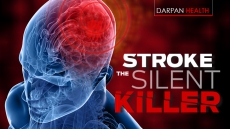The Thyroid Gland: What, Where, And How
The thyroid gland, shaped like a butterfly, is in the front of your neck. It is around the top part of the trachea, or main breathing tube. The thyroid gland makes thyroid hormones when it gets signals from the pituitary gland in your brain. Often the thyroid gland is simply called the thyroid.
You turn the heat in your house up or down with a thermostat. If you turn the heat up, the furnace runs more and uses more energy. In the same way, your thyroid turns up your metabolic rate, making certain body systems run faster or longer, and this requires more energy. The message to turn up the metabolic rate in your body is carried by hormones that the thyroid makes and releases.
Many body systems, including the heart, brain, and muscles, need the right amount of thyroid hormone to work properly. Problems with the thyroid gland most often happen when there is either too much or too little thyroid hormone. Less common is thyroid cancer. While not covered in this article, thyroid cancer can cause problems similar to having either too much or too little thyroid hormone.
A small amount of iodine is needed for the thyroid to make thyroid hormones. In the past, some people in Canada did not get enough iodine in their diets however this is no longer common. Unfortunately, this still happens in other countries of the world.
When The Heat Is Turned Up
Hyperthyroidism is a medical term that is used when there is too much thyroid hormone. You may also hear of this problem referred to as an overactive thyroid. Hyper means more or increased in medical language. When too much thyroid hormone is made and released by the thyroid, many body systems speed up. A person may develop an overactive thyroid and not notice any changes, but more often a person will notice some changes.
An overactive thyroid may result in a person losing weight even though they are eating the same amount or even more than before. This is because their metabolism has been turned up and more energy is being used. People who have an overactive thyroid may also have a faster heart rate, they may sweat more, and their hands may shake.
Too much thyroid hormone can also make a person moody and irritable. People with an overactive thyroid may have swelling which can be felt and seen in the front of the neck. You may have heard the term goiter used for this swelling. At times, people with hyperthyroidism have bulging and reddened eyes.
There are many reasons why the thyroid gland may make and release too much hormone. The signals from the brain to the thyroid gland might be faulty. This can happen if there is a problem with the pituitary gland. There can also be cases when the thyroid is inflamed, or has formed overgrown areas (nodules) and releases too much thyroid hormone as a result. Most often the thyroid gland is overactive because of a disease called Graves’ disease. If a person has
Graves’ disease, their own immune (defense) system attacks the thyroid gland and it becomes overactive because of this. This is an example of what is referred to as an autoimmune disease.
Graves’ disease can run in families. It is not clear what causes Graves’ disease but we know that people in certain families seem to have more risk of getting it. Women are also more at risk for getting Graves’ disease. A family history of hyperthyroidism is one piece of information that will be considered if your doctor thinks that you might have thyroid problems.

When The Heat Is Turned Down
Let’s talk about the opposite problem of hyperthyroidism. Hypothyroidism is the term used when there is not enough thyroid hormone. Hypo means less or decreased. If your thyroid gland is underactive, in other words, it does not make and release enough thyroid hormone, causing your metabolism to slow down along with many other body systems.
A person that has hypothyroidism may gain weight even though they are not eating more or they may be tired when they feel they shouldn’t be. Weight gain and tiredness can happen for many reasons. Some people may blame these changes on aging, but these might be the first changes a person notices if they have an underactive thyroid. Slowed heart rate, constipation, and dry skin may also happen if a person has an underactive thyroid. A person with hypothyroidism may be depressed or may feel like they are not able to think clearly. High cholesterol may also happen with hyperthyroidism.
There are many reasons why the thyroid gland may not make or release enough thyroid hormone. The signals from the brain to the thyroid gland may be faulty. More commonly, a disease called Hashimoto’s thyroiditis is to blame. This disease causes the body's immune (defense) system to attack thyroid tissue and the thyroid gland doesn’t make or release enough thyroid hormone. Hashimoto’s disease is another kind of autoimmune disease, like Graves’ disease.
Confused? You Are Not Alone!
You might be confused at this point because both Graves’ disease and Hashimoto’s disease involve the immune (defense) system but they result in very different changes in the way the thyroid gland works. Graves’ disease results in hyperthyroidism (too much thyroid hormone) and Hashimoto’s disease results in hypothyroidism (too little thyroid hormone). Problems with the thyroid gland can be confusing and hard to understand.
How To Find Out If Your Thyroid Gland Is Working Properly
Blood levels of thyroid hormone that are not normal might be noticed by chance because of blood tests taken for some other reason. Or, blood tests for hormone levels may be done if a person has visited their doctor because they have felt some of the changes described above. If this is the case, the doctor will do a careful physical exam and ask specific questions to do with thyroid function. The doctor may also order further tests.
Along with thyroid hormone blood tests, there is a blood test for a hormone that comes from the pituitary gland. This hormone, thyroid stimulating hormone (TSH), tells the thyroid to make and release thyroid hormone. Information from tests for TSH can help to figure out why the thyroid is not working as it should.
Computed Tomography (better known as CT) or Magnetic Resonance Imaging (MRI) may be done on the thyroid gland in the neck and the pituitary gland in the brain. These tests could show changes in the glands themselves.
There are other tests that can be done. Special iodine can be given and then testing is done to see how the thyroid has used this special iodine to make thyroid hormone. As well, if there are nodules (lumps) in the thyroid gland, a very fine needle can be used to test some of the cells in these nodules.

Treatment
Depending on the type of thyroid problem, treatment can include medication, therapy to decrease the size of the thyroid, and surgery.
• If there is too little thyroid hormone, as seen in hypothyroidism, then synthetic (man-made) thyroid hormone can be taken
• If there is too much thyroid hormone, as seen in hyperthyroidism, then there are medications that can be taken to shrink the thyroid gland or to decrease the amount of hormone made and released
• People that have hyperthyroidism (overactive thyroid) may also be given certain medications to slow the heart rate and metabolic rate
• If hyperthyroidism is severe, or if the problem cannot be fixed with medications, then surgery to remove part of the thyroid gland can be done
Preventing Thyroid Problems:
Other than making sure you get enough iodine in your diet (most Canadians do) and not smoking, there are no general recommendations from the experts about preventing thyroid problems. There is agreement however, that it is important to find out about thyroid problems early to prevent serious complications. If you fit the risk factors listed above, talk to your doctor about getting tested.
Learn More
Think of your doctor as your partner for good health. You can ask your doctor about your risks for thyroid problems and about testing. You can also go to the places listed below for more information.
• Healthlink BC
• Public Health Agency of Canada
• Thyroid Foundation of Canada
• Mayo Clinic






